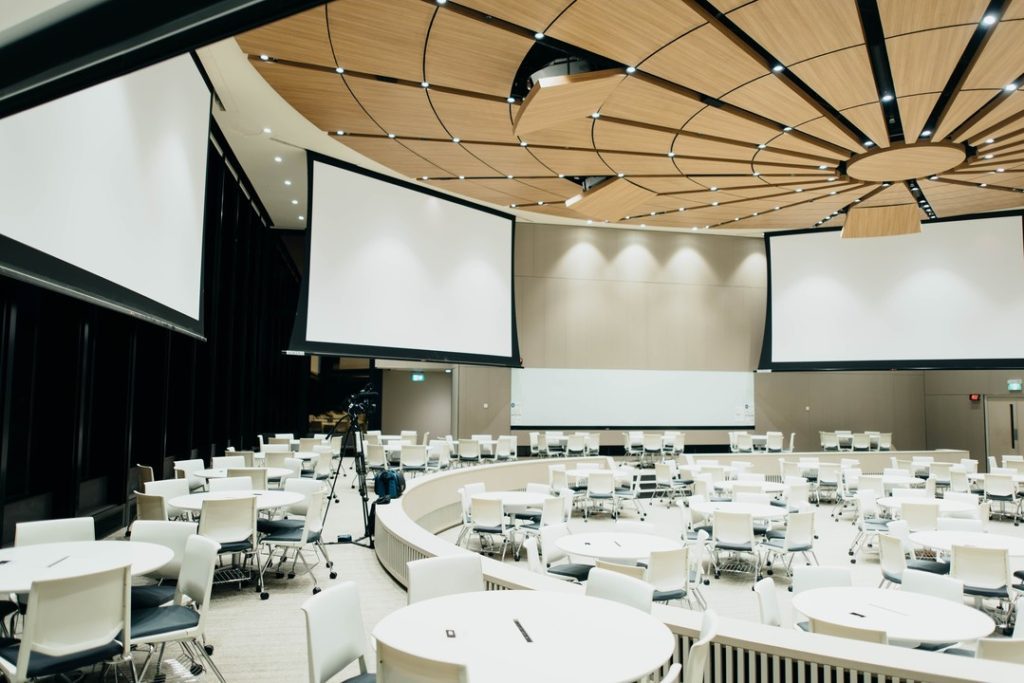With the hybrid workplace model here to stay, quick-fix solutions to accommodate a suddenly dispersed team are giving way to specially designed technologies implemented to create a true experience for workers wherever they are. A key component of replicating a group environment is audio quality. Whether employees are attending a meeting virtually or working on-site in a large, spread-out space, specially tailored audio solutions need to fit the scenario.
One way technology can be used to mimic an office environment is through 3D audio, or immersive audio. Here, we answer a few questions about a topic we’ll all be familiar with soon enough.
What is 3D, or immersive, audio?
Immersive audio technology uses directional audio filters and specifically positioned speakers within a listener’s headphones or stereo to place sounds nearly anywhere in 3D space. In a virtual workplace setting, this can mean replicating the sounds of voices in a room to create a more lifelike office feel.
Similar to cinema surround sound, the synchronous combination creates a sense of sound coming from in front of, behind, or all-around a listener. Some more advanced models take that a bit further; Apple’s 3D sound also uses measurement tools in certain AirPod models to track head movement, enabling the sound to be positioned accurately in real-time.
How does 3D sound impact the virtual or hybrid workspace?
The hybrid workplace is all about spatial relations. Workers can be dispersed by going remote and contributing from home, or they can be on-site following social distance guidelines. Workstations, for example, might be set more than six feet apart within a facility. In order to remain productive in these varied scenarios, localizing sound experiences for those spread out across any distance, virtual or physical, will be of the utmost importance.
Just as higher-quality sound has been linked to better student performance in hybrid classrooms, so can intentionally designed immersive audio environments create a more engaging experience for employees. By tailoring the audio system to the needs of particular teams, businesses can ensure everyone is treated with the same level of communication, no matter their location.
How can I use 3D audio for my business?
As we’ve discussed in previous posts, equipping a conference room for voice exchanges is not the same as rigging one for media playback. When it comes to immersive audio, businesses need to commit to a design process first to ensure a quality outcome. A major consideration is the fact that there will always be employees joining remotely, so spatial audio needs to be configured to accommodate those communicating via tools like Zoom or Microsoft Teams. On-site, elements such as dispersed work pods or large conference rooms need to be specialized so as to ensure clear communication across all channels.
The new meeting style necessitated over the last year and a half has been a challenge. But the silver lining is now revealing itself in the form of varied work styles accommodated and empowered by technology. An immersive audio strategy can strengthen any business looking to best support its own hybrid approach.



